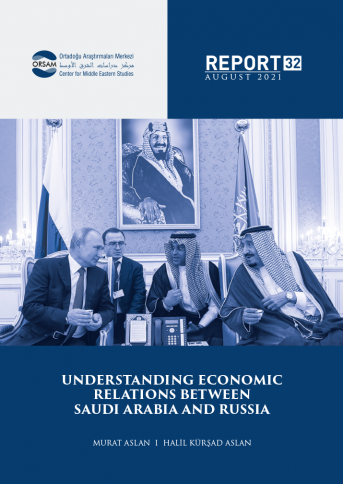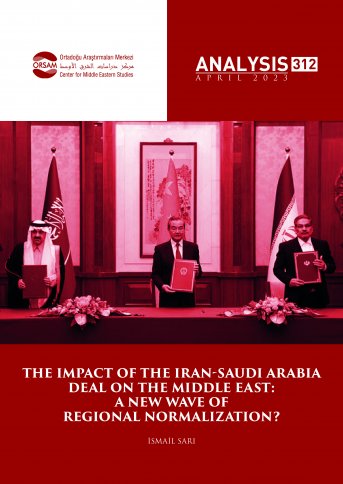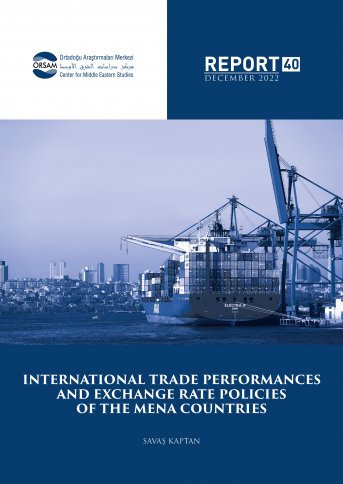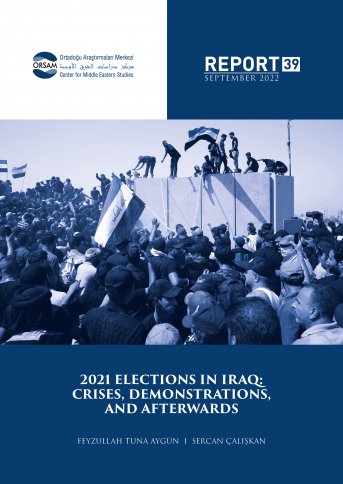
Understanding Economic Relations between Saudi Arabia and Russia
The Middle East region was redesigned in the aftermath of the First World War according to the balance and interests between the world powers of the period. Between the two world wars, there had not been much change in local societies and political mechanisms in the Middle East region. After the Second World War, especially since the 1950s, this region has had an important place in the power struggle between the United States of America and the Soviet Union. In the new global order that emerged after the end of the Cold War, the Middle East region continued to undergo regional fluctuations under the influence of new power dynamics. The United States, which was the only global superpower in the 1990s, was acting according to its own interests with its hegemonic power both in world politics and in the Middle East. However, since the 2000s, the world order has become more polarized, and Russia's interest in the region has increased together with China’s.
The main focus of this report is to examine the main driving motives behind the economic and trade relations that were formed between the Kingdom of Saudi Arabia (hereinafter the KSA) and the Russian Federation (hereinafter the RF) since the 1990s. One of the main arguments set forward in this report is that the course of the economic relations between KSA and RF has been guided by the changing political balances and power relations at the global and regional levels.
It is clear that explaining bilateral economic relations between countries with only one dimension and simple political (or economic) concepts will be highly unrealistic and extremely insufficient. It is also clear that an explanation based merely on simple economic concepts such as foreign trade, exchange rates, and profit maximization would be incomplete. For these reasons, we find it appropriate to analyze the diplomatic and political relations and developments in the Moscow-Riyadh axis by utilizing an interdisciplinary approach. The perspective of the global political economy offers a powerful explanatory model. In the most recent decades both Moscow and Riyadh have been following proactive foreign policies, and their policy behaviors resemble a complicated mechanism fed from multiple sources.
Russia's national economy has been stagnant due to the recent decline in oil prices. Despite the weakening budgetary resources and the economic stagnation, Russia's foreign policy moves are heading towards an extremely proactive trajectory. The important events of the 2000s are the September 11 terrorist attacks, invasion of Iraq by the US, Color Revolutions in the former Soviet geography, 2008 global financial crisis, and the Arab uprisings that have shaken the Middle East since 2010-2011 and their repercussions. These changes have deeply affected the world political system and global governance issues. The Moscow elite focused on two aspects of these changes and developments: the survival of the state and increasing security threats.
These major events have fed into Russia's highly assertive and aggressive foreign policy behavior. Military engagement with Georgia in 2008, rapprochement with China and Iran, as well as the improvement of diplomatic relations in the Middle East are some examples in this regard. In particular, Russia's proactive foreign policy behaviors have accelerated since 2012 with Putin’s third term as president, reaching a peak in 2015 when Moscow surprised the international community by actively involving in the Syrian civil war. Since the collapse of the USSR, Russia has been conducting military operations for the first time in a region outside the former Soviet territory. From a global perspective, we observe that Russia's foreign policy has had a significant impact, particularly on Middle Eastern affairs.
Russia’s relationship with the Middle East is based on three pillars: restoration of prestige in the global power struggle, security interests, and economic interests (Wasser, 2019). These factors, to a certain extent, also apply to Russia’s bilateral relations with the KSA. Another critical factor in the course of bilateral relations between Saudi Arabia and Russia is the changes in the US perception of global and regional security threats. Especially after the terrorist attacks of September 11, 2001, Saudi Arabia, like all Gulf countries, had its share from the aggressive approach of the US. In the face of Washington's aggressive and unconstructive attitude, the Gulf monarchies had to take some steps for the protection of the status quo. Historically, the relations between the KSA and Russia were mostly shaped by the state of relations between Riyadh and Washington. Yet, the relations between the KSA and Russia have evolved to include economic and political interests in addition to the indirect effects of the power struggle among global powers.
Russia's active engagement in the Middle East and the Gulf has both geopolitical and regional dimensions. From the geopolitical point of view, Moscow always looks at the region through the lens of its goal of projecting power at the global level and confronting the West—or simply the US. Thus, regional priorities play a secondary role.
Analysts and experts have focused on Russia’s foreign policy actions, including Moscow’s partnership with China, the war against Georgia, conflicts with Ukraine, the annexation of Crimea, military intervention in Syria, and the increasing activism in the Eurasian Economic Union, which can be considered to be in line with Russia’s strategy of balancing the West. Such measures are part of a broader strategy aimed at undermining the cohesion in the rival axis, (US, NATO, and the European Union) thus making the Western alliance unable to plan, formulate, and implement a policy on Russia and its near abroad. As an example of the challenge posed by Moscow to the US and its global liberal order, in June 2021, Russia declared that it would remove its dollar assets and replace them with gold and euros.
There is a lack of analytical studies that examine Putin's era in the Russian Federation from a political economy perspective. Many crucial issues and questions are yet to be addressed. The most important question in this regard is what are the main factors behind Moscow’s recent activism in the Middle East? This report tries to answer this question by focusing on the interplay of global power dynamics, ideational and domestic sources of Russian foreign policy under the rubric of the global political economy.
In the following sections, the study reviews the bilateral relations between the KSA and RF after the Cold War. In the subsequent section, the main pillars of Russian foreign policy are outlined with a political economy approach. Later, the report reviews the macroeconomic characteristics of these two countries. In the fourth section, the study focuses on bilateral relations in a historical context. In the fifth section, the bilateral relations are discussed under the headings of trade, energy, and investment, to shed light on all those issues. In particular, the study offers an in-depth analysis of trade, investment, and energy questions, where we examine the complex interdependency and other dynamics in the global energy markets that, to some extent, shape the recent coordination between the KSA and the Russian Federation. The final section concludes the report.







